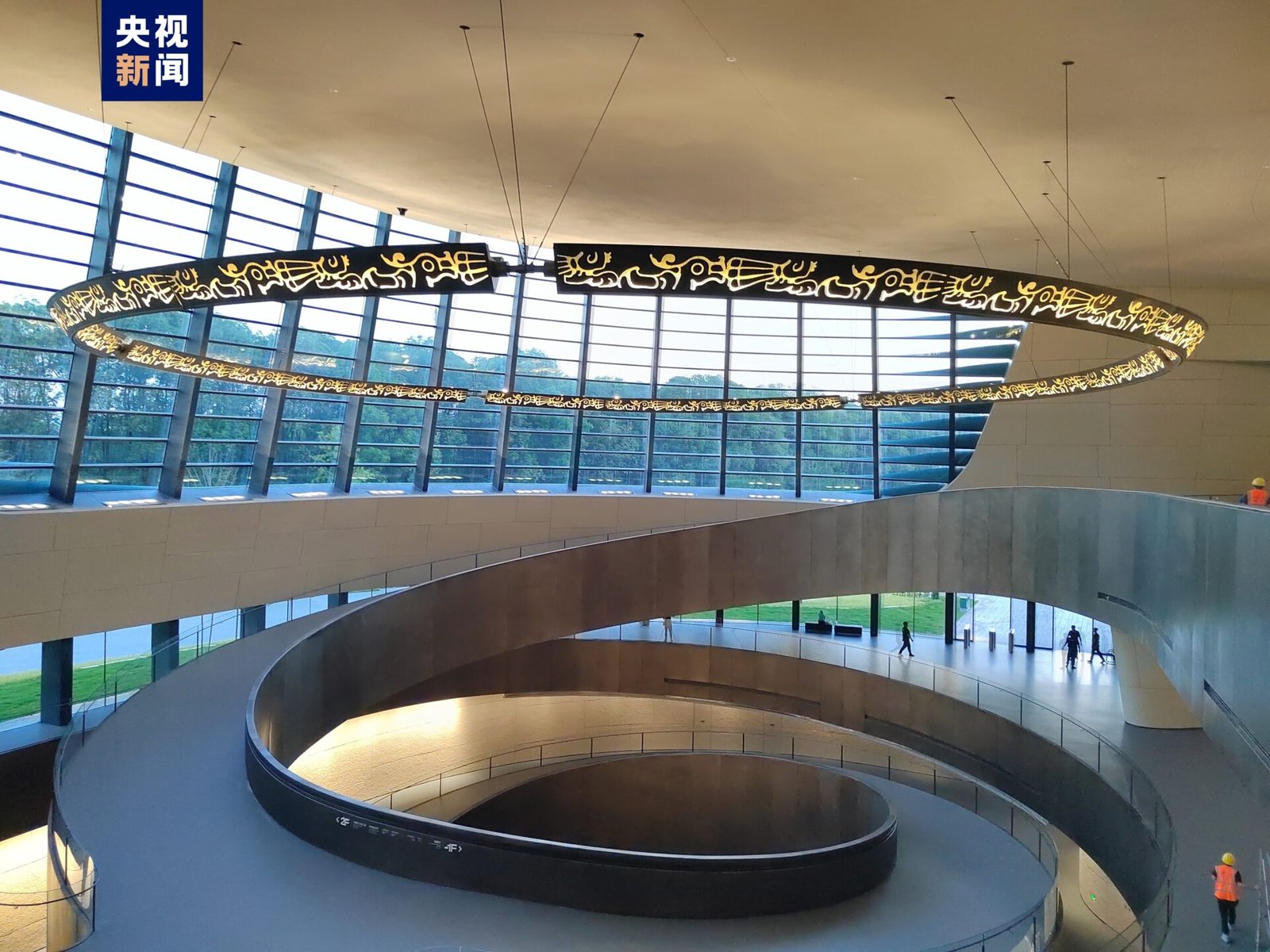Nestled in Guanghan, located in southwest China’s Sichuan Province, the world-renowned Sanxingdui Museum has recently added a new chapter to its illustrious history. The museum’s latest addition, an impressive exhibition hall, began trial operations on a recent Thursday, beckoning visitors from around the world to embark on a captivating journey into the past.
The new exhibition hall covers an expansive area of almost 55,000 square meters, making it the largest single exhibition building that exhibits cultural relics unearthed from historical sites in southwest China. It’s a size that quintuples the area of any previous building within the museum park, emphasizing the gravity and scale of the historical and cultural treasures it holds within.
The hall is home to more than 1,500 artifacts, each one a silent testament to China’s rich history and vibrant culture. Pottery, bronze, jade, and gold pieces collected from various excavations now reside within these walls. Among these treasures, 600 artifacts are being displayed to the public for the first time, presenting a unique opportunity for enthusiasts and scholars alike to glean fresh insights into China’s past.
One of the most striking features of the new hall is the four-meter-tall bronze sacred tree, an artifact that ancient people believed to form a link between Heaven and Earth. The massive bronze artifact is showcased with significant prominence and visual impact, taking center stage in the hall and riveting all who lay eyes upon it. Among the newly-displayed exhibits, the bronze altar discovered during excavation work last year captures significant attention. Composed of three sections, it depicts solemn sacrificial scenes with sculptures of humans, gods, and animals.
The hall also unveils multiple gold artifacts, such as a mysterious gold mask and a bird-shaped gold piece, which are being displayed for the first time. These new revelations further enrich the narrative woven within the museum.
The exhibition hall is divided into three themed sections: “Pursuing Dreams in the Century,” “Majestic Capital,” and “The World of Humans and Gods.” Utilizing cutting-edge technologies, these sections offer an in-depth understanding of the cultural attributes and social development of the Shu civilization. They also highlight the latest achievements in archaeological excavation and research.
The Sanxingdui Ruins, originally discovered in the late 1920s, have earned recognition as one of the world’s greatest archaeological finds of the 20th century. Since 2020, a joint team of archaeologists from numerous research institutions and universities have unearthed approximately 13,000 items from six sacrificial pits at this site, shedding light on the mysteries of a civilization long lost to time.
With its vast collection of artifacts and dedicated exploration of the Shu civilization, the Sanxingdui Museum’s new exhibition hall offers a timeless journey that illuminates the fascinating past while enriching our understanding of human history.
READ MORE:
